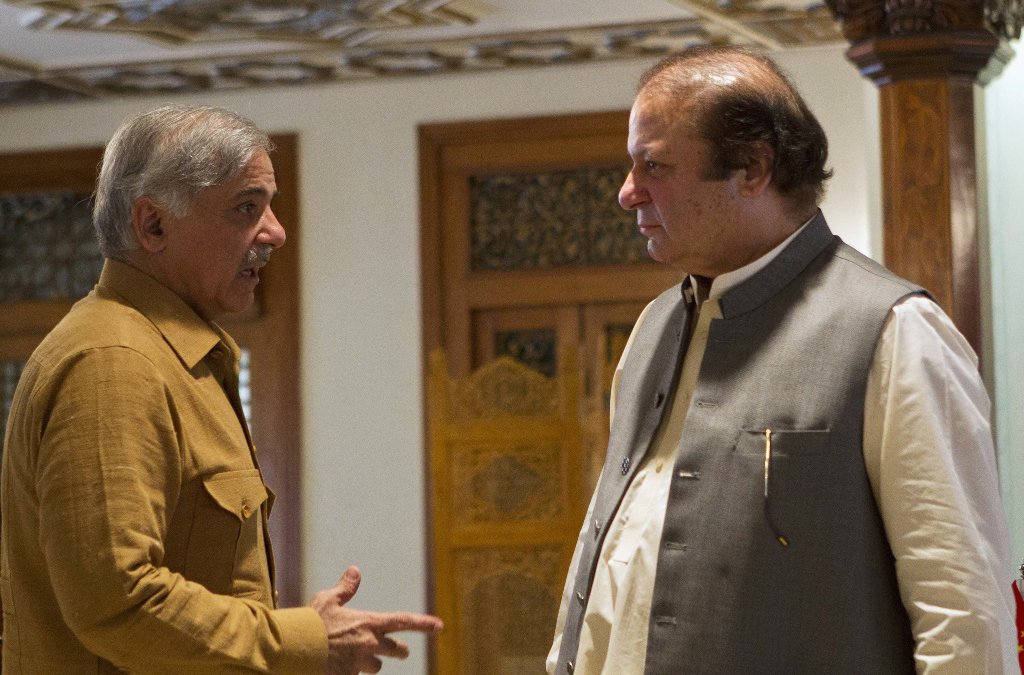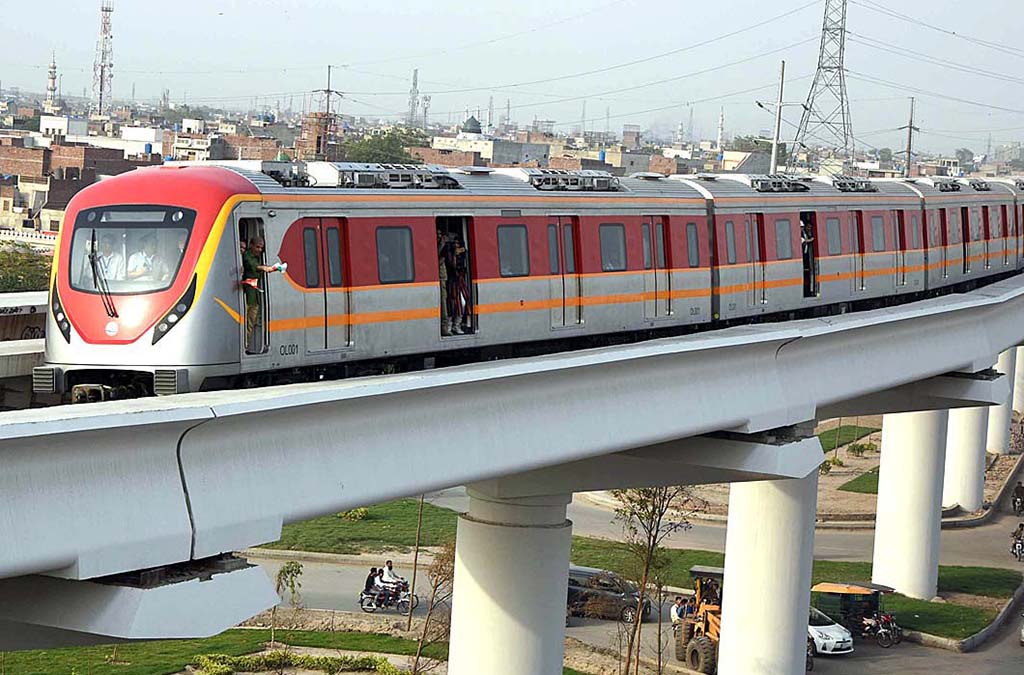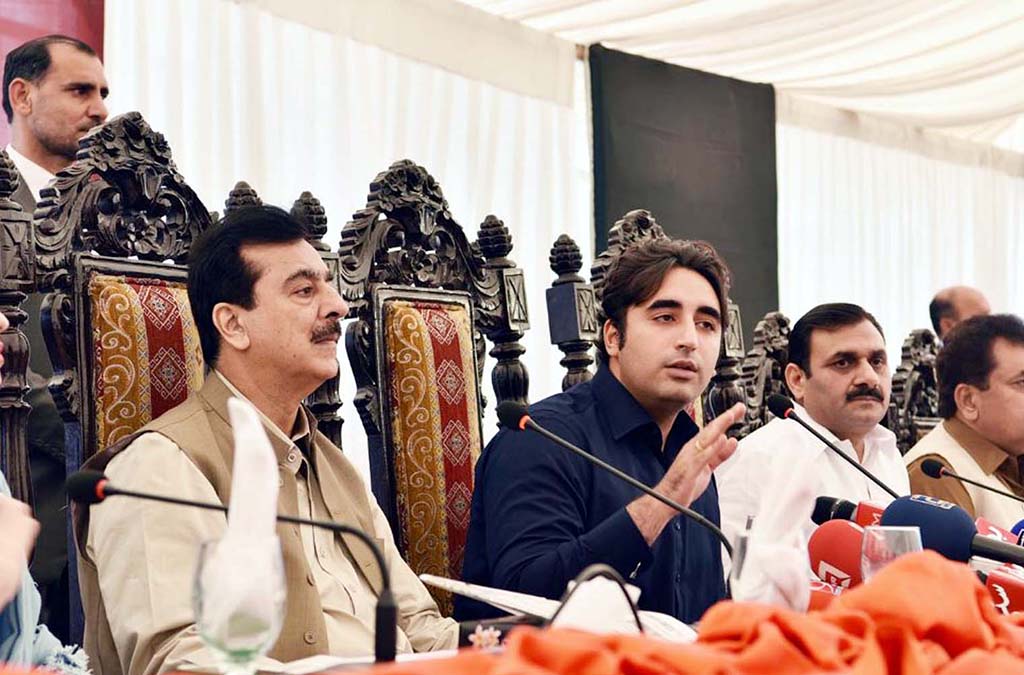It was a deviation and a sudden one. With national election less than two months away, speeches by political leaders from the ruling Pakistan Muslim League-Nawaz tend to hew closely to a script: open with an extended refrain against the opposition, sprinkle in the government’s achievements. But on May 6, Khawaja Saad Rafique, a firebrand leader of the PML-N, and the Minister of Railways had an important message to deliver. “The time has come for Punjab to wake up,” he said passionately while addressing the workers’ convention in Lahore. “Let me say this again. Punjabion, the time has come to wake up! Democracy’s biggest battle will be in Punjab.”
Rafique, 55, is not just any political leader. He is a part of the inner circle of Mian Muhammad Nawaz Sharif, the former president of the Pakistan Muslim League-Nawaz and three-time prime minister. His words could signal a larger party policy. More importantly, Punjab is not just any province. It is Pakistan’s most populous province, with a population of over 100 million, that has a 51 percent share of the 272 contestable seats in the parliament.
“Definitely. Punjab is the main battleground,” says Muddassir Rizvi, the Head of Programs at the Free and Fair Election Network (FAFEN), an Islamabad-based non-profit working for good governance and transparent elections. “Punjab is a test case not just for the PML-N but for all the major political parties. Any party that sweeps this province has a chance of forming the government.”
History and enthusiasm
Punjab is PML-N’s home turf. Its leader, Sharif, was born and raised here. In 1985, he contested from Lahore, won, and was elected the chief minister of the province. From the 1990s onwards, whenever Sharif was sworn in as the prime minister of the country, his younger brother took his place as the head of the province. Shehbaz Sharif has since served as the chief minister Punjab thrice. Despite a few hiccups, the province has by and large stayed with the Sharif brothers, even when the central government belonged to a rival party.
In the previous election cycle, five years ago, PML-N bagged 117 seats out of 148 in the national assembly from Punjab. It arrived in the parliament confident of its overwhelming majority. But that was May 2013. Much has changed since then. Which is why political analysts are asking: can it take Punjab again, and by default the federal government?
That is no small question. A battery of developments, in the last half-decade, has left the PML-N a little uneasy.
In July, Nawaz Sharif was disqualified from the office of prime minister by the Supreme Court of Pakistan, over charges of alleged corruption. A few months later, the court barred him from serving as the president of his party. Then, Khawaja Asif, the country’s foreign minister and a trusted confidant of Sharif, was sent home by a high court. On April 9, five sitting PML-N lawmakers left the ruling-party to demand a separate province in Punjab. (Political watchers predict more desertions from the N camp, especially from the southern constituencies of Punjab). And legal troubles for Sharif are far from over. A corruption probe is still ongoing against him and his three children.

But more worrying are the internal ruptures, in an otherwise tight-knitted group. Divisive intra-party fights are becoming public. Chaudhry Nisar Ali Khan, who has been associated with the party for over three decades, has openly spoken about his falling out with Nawaz Sharif over party policies.
Sharif might not be on the ballot in 2018, but he is still steering the PML-N narrative. After being dismissed, he launched a full-throttle campaign that paints him as a victim of judicial activism. Many within his party, including his younger brother, are not willing to toe the line, dividing the PML-N further into two camps. Twice in the last month alone, Shehbaz Sharif, who is now the party president, contradicted his elder brother’s statements publicly. At one point he even tweeted that Nawaz Sharif’s remarks, “do not represent PML-N’s party policy”.
It is a nightmare, but the party still has a fighting chance in Punjab, insists Rizvi. In fact, Saad Rafique’s speech indicates that it is again zooming in on its home ground. (Rafique did not respond to Geo.tv’s requests for a comment). Their focus should be central Punjab, “which has shown a consistent trend [in its support],” says Rizvi, “The political inclination of the voters here is usually towards Pakistan Muslim League, whether N or Q. (Pakistan Muslim League-Q is a breakaway faction of the PML-N). As for lawmakers crossing the aisle, it shouldn’t worry it too much. “South Punjab has never been the stronghold of any one party. Its politicians have a habit of changing loyalties.”
Central Punjab stretches from the southern edge of the Jhelum river and includes Faisalabad, Lahore, Jhang, Sargodha, Gujrat, Gujranwala, amongst other areas. It enjoys a sizeable 82 seats out of Punjab’s total 141 general seats in the parliament.
The area is considered the largest and most developed region of Punjab due to an expansive colonial era irrigation system. It has also remained the PML-N’s impregnable bastion since the 1990s. Both the brothers contest from here and win. According to FAFEN findings, the ‘safest seats’ for the Sharifs’ party are in central Punjab, in Sargodha, Faisalabad and Sialkot.
If the Pakistan Muslim League-Nawaz hopes to form government again in 2018, it will need to pick up almost all of these 82 seats. But will the voters cooperate?
Mohammad Arshad, 55, is a trader in Faisalabad. He has always voted for PML-N and will do so again in 2018. “Thappa siraf sher ka. Look at these motorways, roads and hospitals they have built,” he says from his small shop in Faisalabad’s teeming Bhawana market, “At least they do good for this province. There is really no alternative when it comes to development.” Arshad maybe right. Realizing that their core base of supporters is in Punjab, the Sharif brothers’ mega development and infrastructure projects have been strategically located in the province. For example, the much vaunted rapid bus transit system has been launched by the PML-N government in Lahore, Multan and Rawalpindi. Another mammoth project is Pakistan first metro train, known locally as the Orange Line Metro, is expected to be up and running in Lahore before the election.

There is a lot the party can count on - ardent supporters - and point towards – transport-oriented development – as it walks into the election, slated for July 25. Yet, there is some nervousness due to defections from party ranks, although none have been big wheels.
Those leaving say there is confusion about who runs the party: Nawaz Sharif or his younger brother. PML-N’s sitting member of national assembly from Sheikhupura, Chaudhry Bilal Ahmed Virk, left the party, and his seat, in April. “There has always been a Shehbaz Sharif camp and a Nawaz Sharif camp,” he tells Geo.tv, “It has become more obvious over the years. I was brought into the party by Nawaz Sharif, at a time when his brother was supporting my rival.” Virk says that the chief minister Punjab ignored him in the last five years. Requests for meetings would be denied, which is what forced him to finally bid farewell to a party on whose ticket he contested from in 2008 and 2013.
But PML-N’s Raja Zafar-ul-Haq insist that those fleeing are not loyalists. “This time we will be more careful when awarding tickets in Punjab. The focus will be to only give tickets to staunch loyalists.” (This year, to date, as of May 30, 16 sitting lawmakers from Punjab have left the PML-N for the PTI)
The others
The PML-N are the defenders. Trying to unseat them are the contenders: The Pakistan People’s Party and the Pakistan Tehreek-e-Insaaf.
After the 2008 polls, the PPP won 45 seats in the national assembly from Punjab. But in 2013, it suffered its poorest showing, only winning two NA seats. The perception now is that the PPP has been completely wiped out of the province, or is on life-support.
“This is a misconception,” argues Rizvi, “that the PPP is no longer a viable option. In the last election, it got 2.8 million votes in Punjab, only 1.6 million less then it received in 2008. However, the 2.8 million votes did not translate into winning seats. What this means is that the PPP still has a strong vote-base in the province.” Data collected by FAFEN, he adds, shows that a large number of PPP loyalist did not even come out to cast a ballot in 2013. “Now this is the real challenge for the Pakistan People’s Party. Can it mobilize these voters to come out of their homes?”
The PPP, headed by the 29-year-old, Bilawal Bhutto Zardari, seem to be doing just that. Kicking their campaign into high gear, the party has held several mammoth rallies in the province, including in Jhang and Multan in recent months. Separately, two political gathering were organized in Lahore alone this year.
“People’s Party has now realized its shortcomings and weakness,” explains Qamar Zaman Kaira, the party’s secretary information, “Bilawal Bhutto Zardari has a new manifesto, which will be out end of May. Plus, he has infused new and young blood into the ranks. We are much more confident this time of winning.” As for the campaign, Kaira says, they can only do a critical analysis of the PML-N government in Punjab and recast their development projects in a negative light. “They have been sitting in this province for the past ten years. Yet, the Metro bus and the orange line is in Lahore. Is the province made up of only one city? They need to answer these questions.”

Regardless of the talk of new vigour, the PPP camp has its own sticking points. PPP ticket hopefuls are becoming increasingly disgruntled by the party’s lack of a clear strategy. Since 2013, several notables of the party in Punjab - Nadeem Afzal Chan, Firdous Ashiq Awan, Raja Riaz, Imtiaz Safdar Warraich – have left the PPP camp for the rival Pakistan Tehreek-e-Insaaf. Other PPP members complain that the party is not taking on the Sharifs as aggressively as the PTI is. Then there is the issue of funds. The other parties, says a PPP ticket aspirant from central Punjab, who spoke on the condition of anonymity, are willing to slosh a large amount of cash to win a seat. (This could not be independently verified). “Election is around the corner and yet there is no talk of disbursement of funds by the PPP senior leadership. How do we start our campaigns? I am paying out of own pocket right now or asking family members to help.”
A two-way race?
While the PPP will have to work on corralling its voters, till then, the contest seems to be only two-way: between the PML-N and the Pakistan Tehreek-e-Insaaf.
Since the last election, the only real opposition for the Sharifs, and its fiercest critic is the PTI-led by cricketer-turned-politician Imran Khan. While the PPP performed dismally, the PTI managed to bag eight seats in the national assembly from Punjab. It may still be a rather small number, but the recent wave of new entrants into its folds, from the PML-N and PPP, is providing political hay.
“We have a clearer on-ground strategy now,” says Shafqat Mahmood, from the PTI, who won in 2013 from Lahore, “We are better prepared. We have a better pool of candidates then we did last time. Also, we understand the mechanics of election now, which is what has helped us organize ourselves at the union council and grass root level.”
What else to watch out for?
Since its creation in 1947, Pakistan has held 12 national elections (two indirect). Of these, the 2018 polls will be the first to be conducted in the summers. Temperatures in Punjab can reach up to 50 degrees Celsius. Pakistan’s energy shortfall of over 4,000 MW has been wobbling economic activity. One of the worst affected provinces is Punjab, which also consumes the most electricity.
Soon after assuming power in 2013, the PML-N government worked overtime to tackle the crisis and has since set, and then failed to meet, many deadlines to end power outages. Last year, then-Prime Minister Nawaz Sharif promised to end the rolling blackouts by December 2017. Yet, on May 16, a large part of Punjab and the Khyber Pakhtunkhwa were plunged into darkness for eight hours, due to a fault in a power transmission line. Unscheduled load-shedding usually result in protests by enraged citizens across the country, including Punjab. So, what will the upward to 59 million registered voters in Punjab be thinking as they set out in the sweltering heat, from homes with no power?
But coming back to the looming question: who can win Punjab?
“Out of 141 general seats, I think PML-N can safely rely on winning 80 constituencies, mostly from central Punjab,” says Majid Nizami, a senior producer at Geo Television who is also part of the Geo Election Cell, “As for PTI, their prospects are improving. They can secure at least 45 seats due to the new electables in their party.” While a clear verdict will only emerge post-election, one thing is certain, after a long time polls in Pakistan’s most important province are expected to be unpredictable. Closer to July, there will be a riot of voices and ideas and no can say for certain which will prevail. “If we don’t comment on the quality of election this year, and if there are indeed fair, then all major political parties have a fair chance in the province,” says Rizvi.
With reporting by Natasha Mohammad Zai from Lahore and Irfanullah from Faisalabad


